If February makes you feel like the winter might never end, a trip to Spain might just be the solution. The month offers mild winter weather, low prices, minimal crowds, and one of Spain’s best festivals!
Spain is a country that knows how to party at any time of the year, but February is Carnival season, and that is when things really get wild with colourful, chaotic street parties that cannot fail to beat those winter blues.
But Carnival is far from the only thing to celebrate in February; foodies can indulge in seasonal delicacies, nature enthusiasts can explore stunning winter landscapes, romantics can enjoy a unique Valentine’s Day, while wildlife lovers search for elusive species. And if all else fails you can just nip over to Morocco, for a change of scene!
In short, whatever you’re looking for from your winter holiday, Spain’s got you covered. Let’s dive into the top sights, celebrations, and activities on offer in Spain in February.
- It’s Carnival!
- Winter wanderers
- Romantic reenactments
- Saints and devils
- Spring blossoms
- Eat, drink, repeat
- Wildlife
- Flamenco fiesta
- Starry starry nights
- African adventure
First things first: What’s the weather doing?
February might not be the hottest month of the year in Spain, but it’s certainly milder than many other European destinations, and there’s a noticeable improvement from the previous months. Temperatures start to climb back up from their January slump, the chance of rain decreases, and the days draw out as hours (well, minutes) of sunlight per day increase.
As always, the story changes depending on where you are in the country. The northern coast tends to be the coldest and most unsettled area, as it’s the first to be hit by storms and cold fronts coming off the Atlantic. So, if you’re heading to Cantabria, Galicia, Asturias, and Basque Country, it’s wise to pack raincoats, umbrellas, and warm layers to combat temperatures between 5°C and 13°C.
In contrast, Madrid is rarely wet and enjoys clear blue skies, crisp sunny days and highs between 11°C and 14°C. But with lows of 1°C to 5°C, the evenings and early mornings can be cold. For a milder city break, head to Barcelona, where you’ll enjoy highs around 16°C and milder evenings rarely dropping below 6°C.
Southern Andalucía enjoys even warmer temperatures of 8°C to 18°C degrees, making locations like Seville and Malaga wonderful places for winter warmth. The Balearic Islands are mild, too, with average temperatures around 16°C and recorded highs of 20°C. But, as always, the Canary Islands win the winter sun award for Spain, thanks to their average temperatures of 18°C, highs up to 21°C, lows of a balmy 14°C and only a trifling three days of rain across the month.
Now that you know what weather to prepare for, let’s start filling up your itinerary with our top 10 things to see and do in Spain in February!
It’s Carnival!
The biggest event of February’s calendar is undeniably the colourful chaos of Carnival. Held each year in the lead up to Lent, Carnival celebrations are one last chance to party before the austere days of Lent arrive with restrictions and fasting.
Carnivals are held all across the country, and though certain elements crop up in each, there are no hard and fast rules for these parties. Instead, each town and city goes out of its way to make it unique to them. It’s all about bringing communities together to show off their exceptional creativity and unique culture. Each parade is heavily influenced by local customs, folklore, and traditions. And, of course, they all involve food, drink, dancing, and revelry!
Here are some great Carnivals to catch:
- Cádiz throws perhaps the most famous Carnival in the country. The city spends all year preparing for this event, and it is renowned for its satirical and witty performances that mock social norms and current events.
- Santa Cruz in Tenerife is one of the largest carnival celebrations in the world. It goes on for over three weeks and involves huge parades with extravagant floats, incredible costumes and hotly contested Carnival Queen and Carnival Drag Queen competitions.
- Sitges hosts another very famous event. A dazzling, inclusive Carnival with LGBTQ+ flair. Expect extravagant costuming, all-night parties and the Mardi Gras-style Parade of Debauchery!
- Madrid‘s Carnival parades have a theatrical element thanks to the elaborate masks and Venetian costumes worn by participants.
- Aguilas, Murcia and Avilés, Asturias Carnivals have been named Festivals of International Tourist Interest.
- Xinzo de Limia, Galicia, has the longest Carnival in the country, lasting for five Sundays in a row, each with its own theme.
- Gran Canaria’s Carnival attracts over 200,000 people and can be traced back to the 15th century.
- Laza, Galicia’s includes some downright eccentric rituals, such as the throwing of live ants into the crowd and a full-scale flour war.
- Platja d’Aro on the Costa Brava throws a fantastic Carnival entirely out of proportion to the town’s small size.
Carnival celebrations are a must-see if you’re in Spain in February, and participation is encouraged! So book accommodation in one of the country’s biggest Carnival destinations now, then start planning your costume!
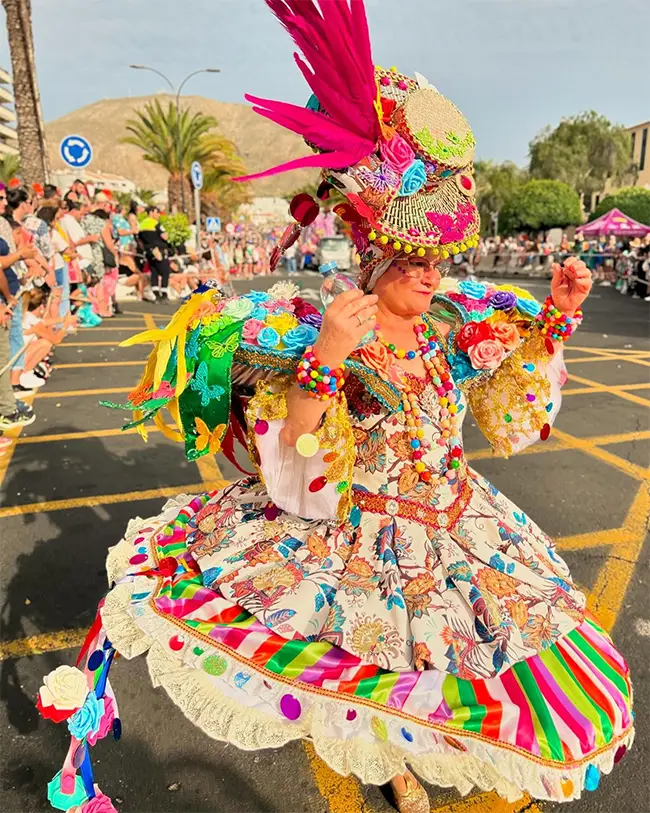

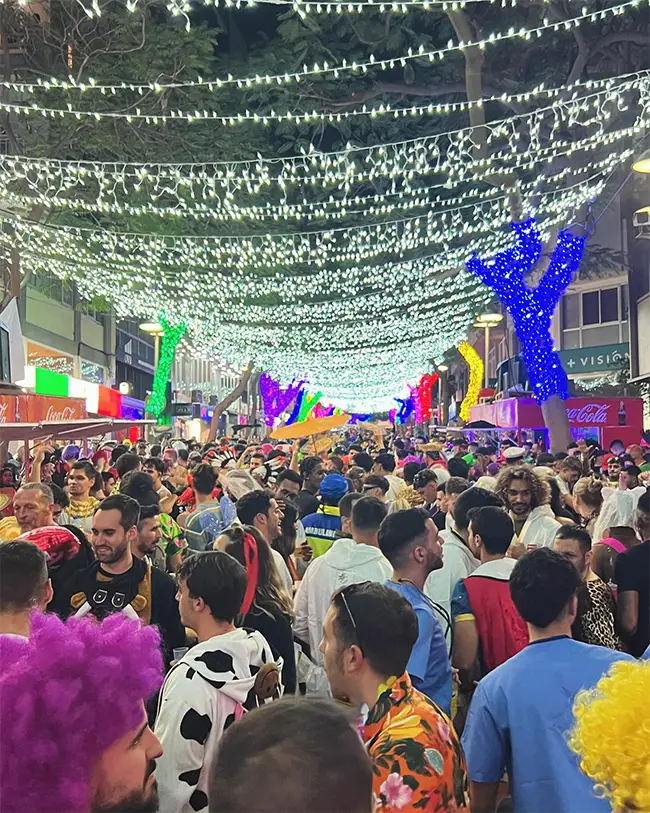
Winter wanderers
For the last couple of months, we’ve been raving about Spain’s ski resorts and why you should spend your winter holidays enjoying them (seriously! There are over 30 of them!). But we do realise that downhill skiing and snowboarding are not for everyone. So, this month, we want to talk about two wonderful winter activities that let you experience the magical landscape of the snowy mountains without the skills (or the perils) of downhill. Those two things are Nordic (or cross-country) skiing and snowshoeing.
Nordic skiing is a full-body workout that’s low-impact and much safer than downhill skiing and snowboarding. And it’s peaceful. It’ll take you through rural parts of the ski map that downhill skiers never see and can be enjoyed at your own pace, with no lift queues, crowds or adrenaline needed. Several of Spain’s ski resorts have cross-country trails, but Baqueira Beret resort has one of the longest at 7 km.
Similarly, snowshoeing allows you to hike, at your own pace and ability through these breathtaking landscapes. The wide, flat paddles of the snowshoes prevent you from sinking into the snow, allowing you to move relatively easily across the surface, enjoying the peaceful scenery.
Several ski resorts offer snowshoeing with equipment rental and designated trails to enjoy. But you don’t even have to head to a ski resort to enjoy this; snowshoeing guided tours are offered in many of Spain’s national parks and mountainous areas. This includes the Aiguestortes National Park in the Catalan Pyrenees, where you can enjoy a beginner-friendly, half-day hike through a landscape of frozen lakes and snowy peaks. Alternatively, head to the Sierra Nevada mountains for guided snowshoe tours suitable for all levels and ages, or the Picos de Europa, Cantabrian Mountains for more ambitious multi-day treks.
Want to explore the winter wilderness your own way? Search for accommodation near Spain’s ski resorts or mountainous national parks today. And remember to pack your thermals!
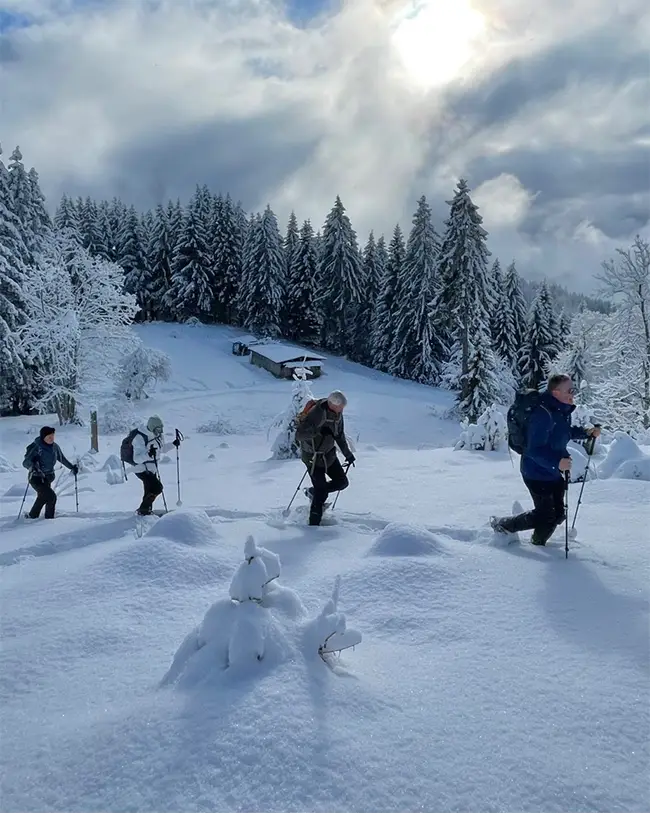
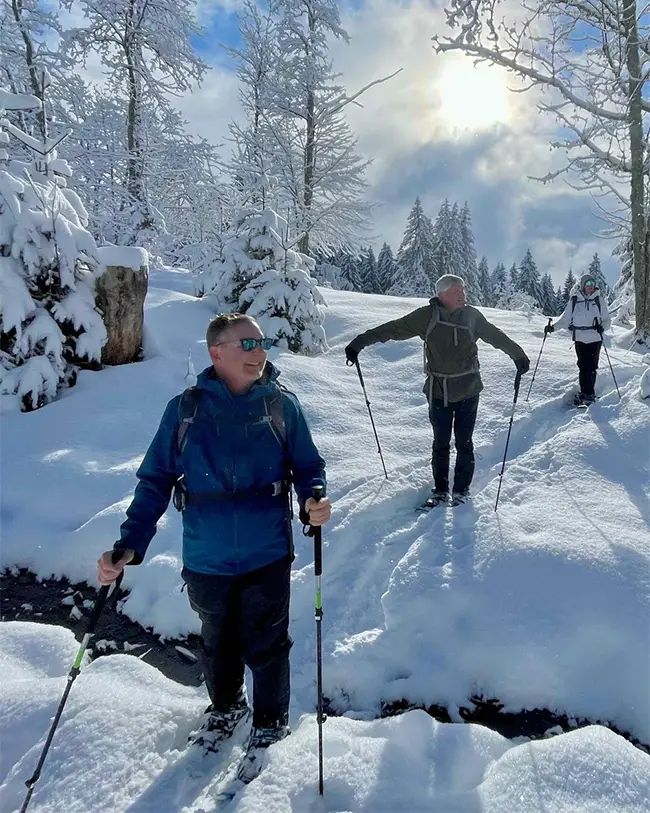
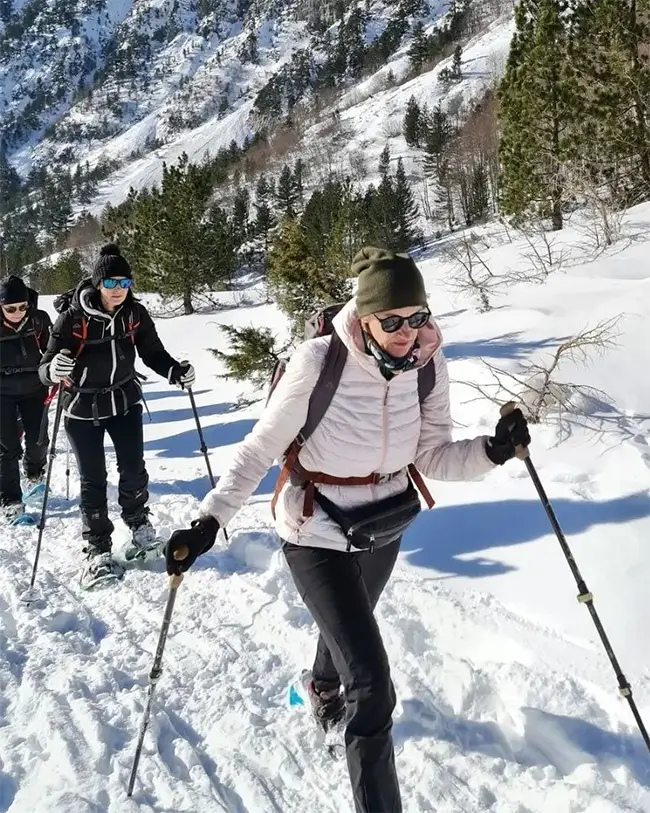
Romantic reenactments
February, of course, means Valentine’s Day! If you’re travelling to Spain with your loved one this February, why not head to Seville? It’s often said to be Spain’s most romantic city, and thanks to its mild winter weather, it’s perfect for a Valentine’s visit. Stroll through the city’s atmospheric old town and enchanting parks before exploring the vibrant flamenco scene, numerous tapas bars and exquisite dining scene. Perfect for a date night to remember.
If you can’t make it to Seville, don’t panic; in Spain, you’re never far from a restaurant serving delicious food and exceptional wine, and since Valentine’s Day falls in the middle of the carnival season, you won’t be far from a party with live music and dancing, either.
If that’s not enough for you, how about spending your Valentine’s holiday celebrating a centuries-old love story? Head to Teruel in the mountains of Aragon on the third weekend of the month to experience one of Spain’s oldest events, Las Bodas de Isabel Segura, or the wedding of Isabel Segura.
The legend goes that in the 13th century, Isabel Segura and Juan Diego de Marcilla, fell in love but were prevented from marrying by Isabel’s parents due to Diego’s lack of funds. He left to make his fortune only to return to find Isabel marrying another man, having believed her beloved dead and lost to her forever. On discovering the news, Deigo died of heartbreak, and a distraught Isabel died alongside him at his funeral.
The remains of ‘the lovers of Teruel’ were discovered in San Pedro Church in the 16th century, and the story has captured the hearts and imaginations of the locals ever since.
Join them to watch as thousands of actors transform Truerel into a mediaeval town and reenact the tragic events in the order they occurred. The festival takes four days and starts with the announcement of Isabel’s wedding, then in almost real-time, her wedding, the arrival of Don Diego, his death, the funeral, and the ensuing death of Isabel.
Fancy celebrating Valentine’s Day with Spain’s own Romeo and Juliet story? Book accommodation in Teruel now, and remember to pack your mediaeval attire. Or head to Seville to experience a date night in Spain’s most romantic city.
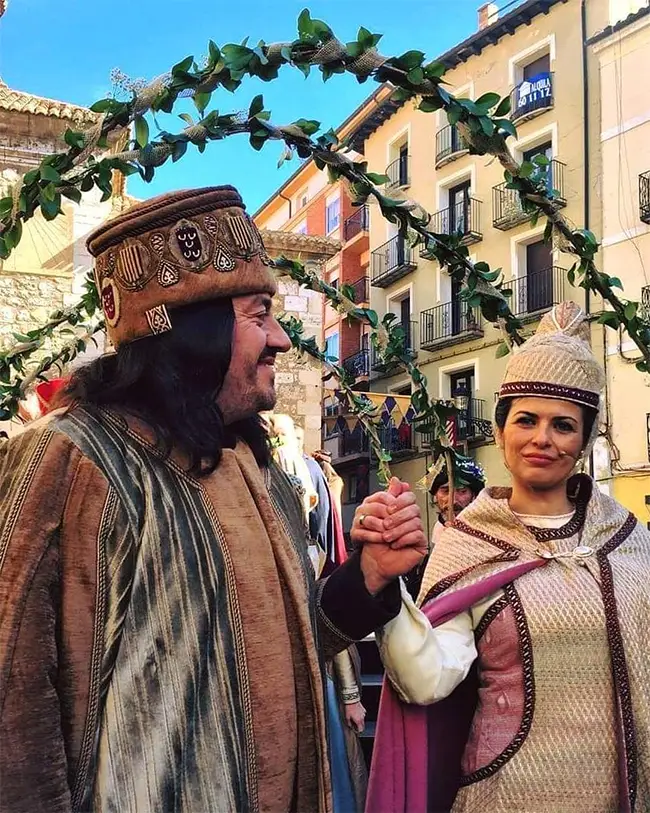
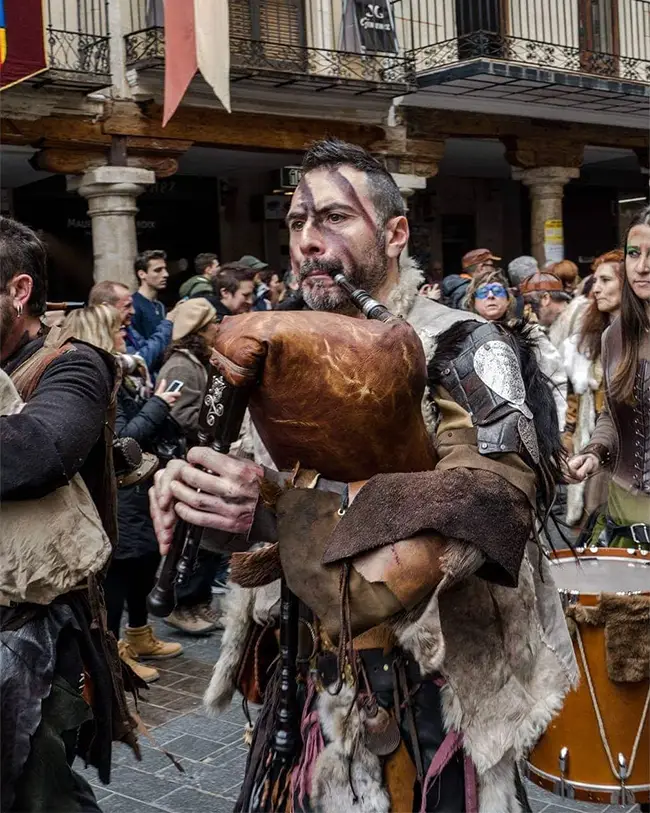

Saints and devils
Carnival is undoubtedly the festival highlight of the month, but it’s far from the only celebration happening. Check out these saints’ days and celebrations in Spain in February:
- San Cecilio Festival: Granada’s patron saint’s celebrations centre around the atmospheric gypsy quarter, Sacramonte. This means that flamenco performances, both planned and spontaneous, take place alongside the food and drink. Celebrations start on 1st February and then escalate on the first Sunday of the month. Make your way to the Sacromonte Abbey to be in the heart of the celebrations.
- La Endiablada: At the start of February, head to Cuenca to see the population of Almonacid del Marquesado dress up as devils and dancers and engage in four days of complex rituals and evocative performances. The origins of this centuries-old festival are debatable, but whatever the reasons, it’s an unforgettable sight!
- Festival of Santa Eulalia: This young saint was from the Sarriá region of Barcelona and is celebrated in the city on 12th February. But in Ibiza, there is a town named after her, and the celebrations go on there for a whole month! Check out the busy schedule full of family-friendly events if you’re on the White Isle for the winter.
- Day of Andalucía: 28th February is the day to celebrate Andalucían autonomy. It’s a public holiday marked with street parties and parades showcasing the region’s unique culture and traditions. Head to cities such as Málaga, Granada, Cádiz, and Seville for the biggest celebrations.
If you fancy seeing how the locals celebrate, book accommodation close to one of these festival hot spots, then get ready to party.
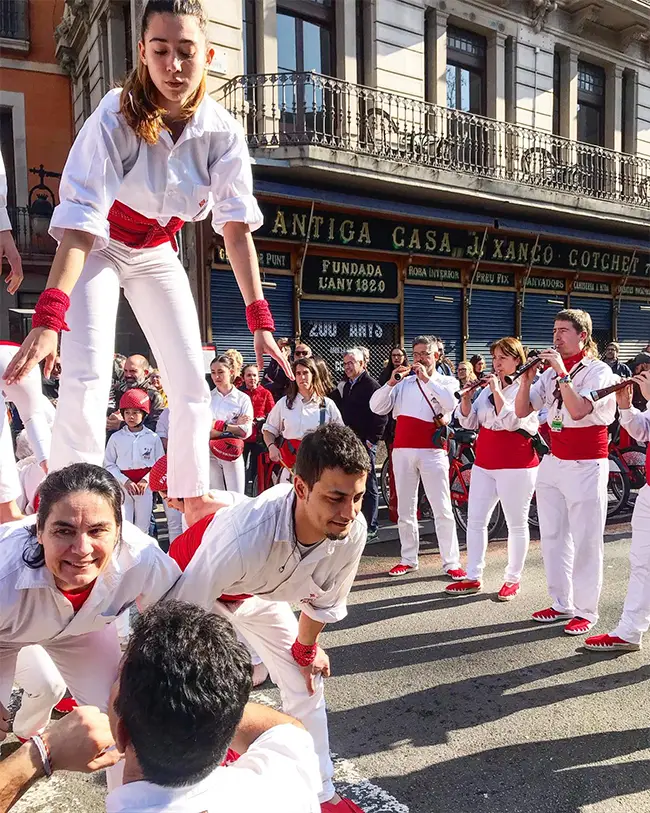
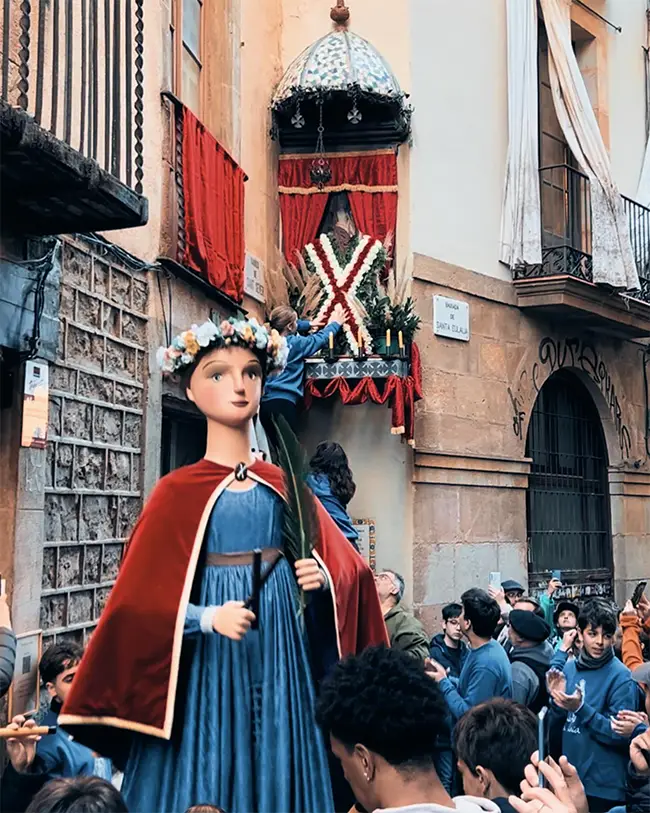
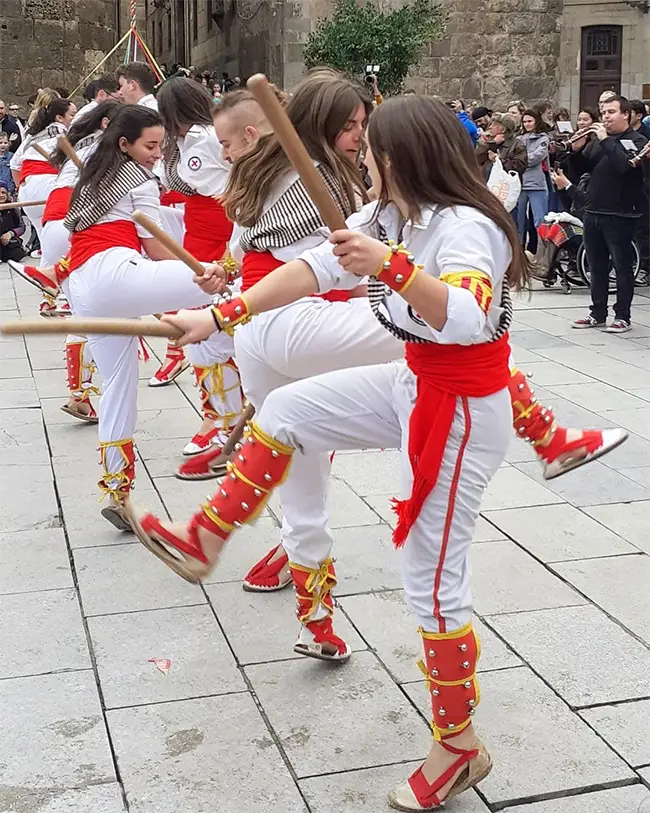
Spring blossoms
Last month, we talked about the almond blossom season and how stunning the winter countryside is when it’s transformed by the clouds of pink and white flowers. It’s a sight that’s not only beautiful but serves as a welcome reminder that, though it may still technically be winter, spring is on the way!
But it’s a fleeting delight; it arrives in late January and can be gone by March, so we recommend making the most of it. The locals certainly do, taking time each year to cycle, drive and wander through the almond groves. They also throw almond fairs in early February to celebrate the beauty of the delicate blossoms, the oncoming spring, and the economic value these trees bring to their regions.
Catch almond fairs in:
- Son Servera, Mallorca
- Jalon, Alicante
- Guaro near Malaga
- Tejeda, Grand Canaria
- Santa Inés, Ibiza
These fairs are lively events with music, food and drinks tents, competitions and demonstrations of traditional almond harvesting techniques. You can expect to sample edible almond delicacies like nougat and marzipan alongside other products made from the nuts, such as oils, cosmetic products and medicines.
But it’s not just rural areas where you can enjoy these beautiful blossoms. Visitors to Madrid can head to Quinta de Torre Arias Park, Parque del Capricho, or Quinta de los Molinos Park to see over 1,000 almond trees in bloom.
Fancy visiting an almond fair or taking Instagram-worthy shots of the trees in bloom? Search for accommodation in Madrid or one of the almond-growing regions to find your perfect February stay.
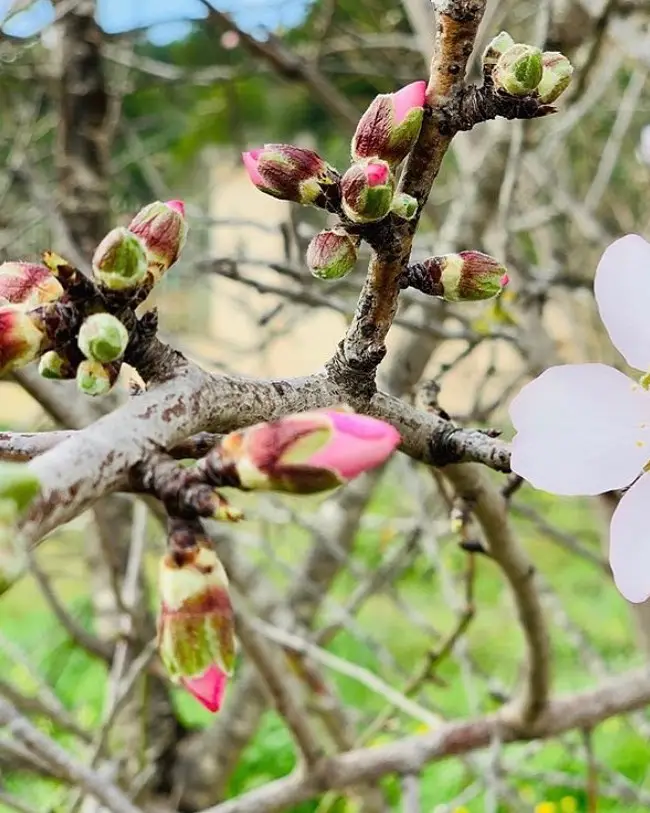
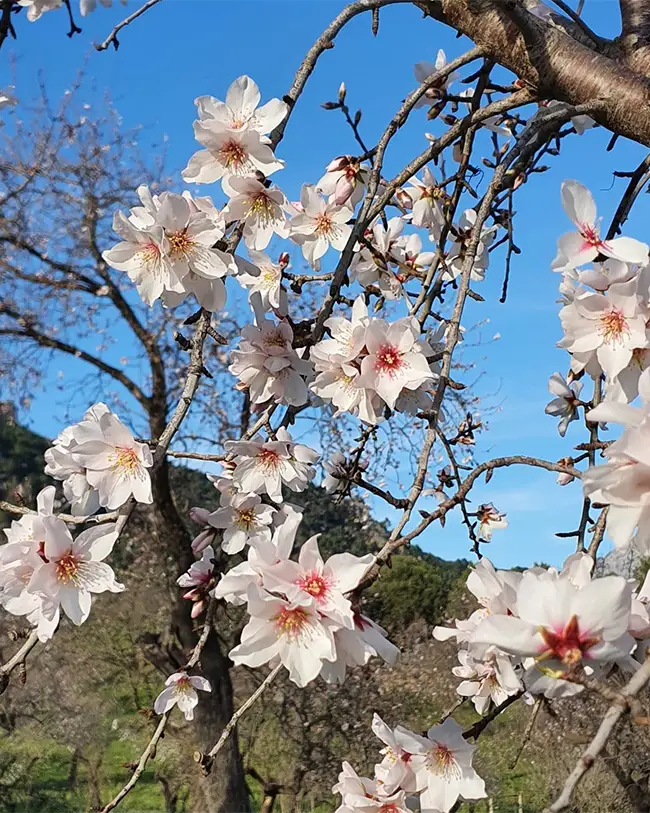
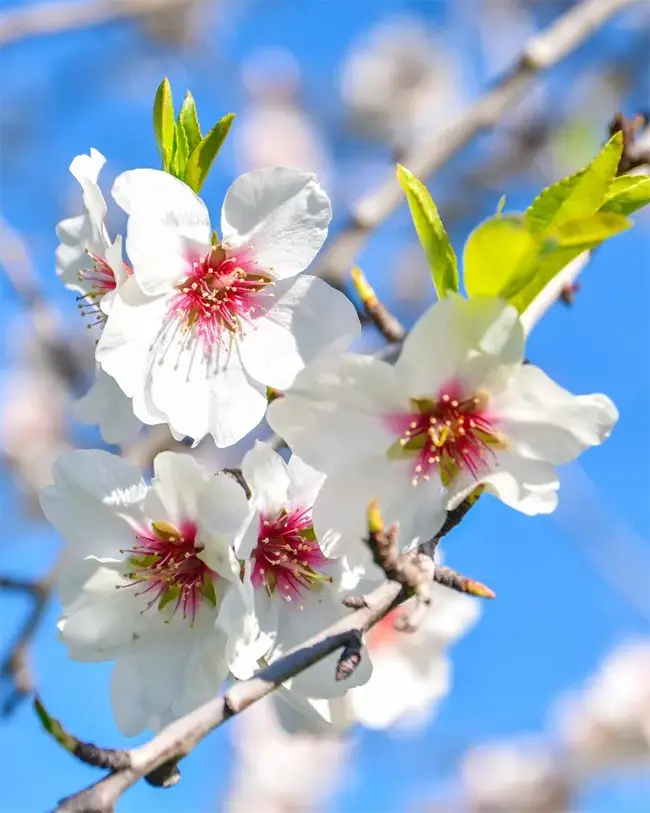
Eat, drink, repeat
Foodies rejoice; February is an excellent time to visit Spain and sample the local gastronomy! Here are some reasons why:
Botillo Festival in Bembibre, El Bierzo has been named a Festival of National Tourist Interest and is a must-visit for meat lovers. It celebrates the Botillo, a cured pork product from the El Bierzo region of León. It’s best not to ask which cuts of meat are used to make it, but during the festival, you’ll find it staring on every restaurant menu and taking centre stage at the food fair alongside other meats, cheese, olives, and wines from the region.
We talked about Truffle season back in December, and it’s still underway, but only for a few more weeks! Get into the woods of Catalonia and Aragón in February while these nuggets of black gold are still in season! Book an organised truffle hunt (with trained truffle dogs) for the best chance of finding these much sought-after and very expensive delicacies. If you don’t fancy the hunt, visit a local market and purchase truffles to cook with yourself, or find a restaurant where you can enjoy the seasonal delicacy without doing any of the work yourself!
We’re also coming to the end of Calçots season. These long green onions are a delicacy of Catalonia and a firm favourite with locals. During the winter, you’ll find them celebrated in restaurants throughout the region, where they are grilled over an open fire and then dipped in a Romesco sauce. Eating them is a messy experience that often requires wearing a bib, but the mess is well worth it! Look out for Festivals of the Calçotada taking place in and around Tarragona from the end of January till early March.
With the end of truffle and calçots season comes the start of something new, cider season! It kicked off on 20th January in Basque country, Northern Spain, and by February, is well underway. Join in with the local tradition of touring the authentic Basque cider houses, sampling the new year’s tipple, enjoying rustic meals and watching cider-making demonstrations.
Are your taste buds tingling? Book February accommodation in Spain now to make the most of these seasonal delights.


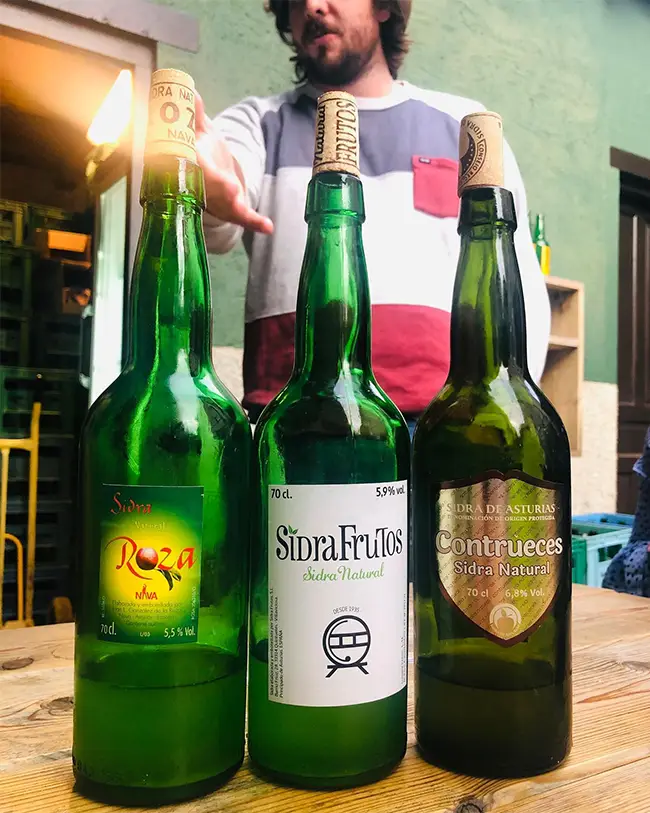
Wildlife
Spain is home to some incredibly rare wildlife, including the endangered Iberian Lynx. This elusive wild cat is best spotted during winter as the lack of leaves and vegetation makes them easier to see, while fresh snowfall helps guides spot their footprints and traces. But by March, the Lynx are often tucked away birthing and raising their kittens so February is your last chance to spot one! The largest population of lynx are in Sierra de Andújar, but the chances of you seeing one on your own are pretty non-existent, so join an organised tour or experience to maximise your chances.
Lynx are not the only wildlife to look out for in February. Head to the Canary Islands and hop aboard a whale-watching boat to spot resident pods of pilot whales and dolphins and migrating orcas. Boat trips from Tarifa also offer sights of passing whales, resident dolphins, and abundant sea birds.
Head to the Laguna Gallocanta in Aragon to see tens of thousands of migrating Eurasian Cranes. Alternatively, visit The Fuente de Piedra Lagoon in Andalucía to watch thousands of flamingos flock to these wetlands to build nests and breed. Come back in April / May to see the new flamingo chicks hatching!
The changing seasons also bring new species to Doñana National Park. At the start of the month, spot the birds that wintered here, including black storks, greylag geese, and short-eared owls. Then, towards the end of the month, catch a glimpse of the first birds returning from their African winter migrations, such as Egyptian vultures, short-toed eagles and black kites. But don’t just watch the skies because February is also the time to spot wild boar piglets running around in the brush!
Fancy spotting a wild lynx, playful dolphins or baby boar? Book accommodation near one of Spain’s top wildlife-watching spots now, and don’t forget your binoculars!
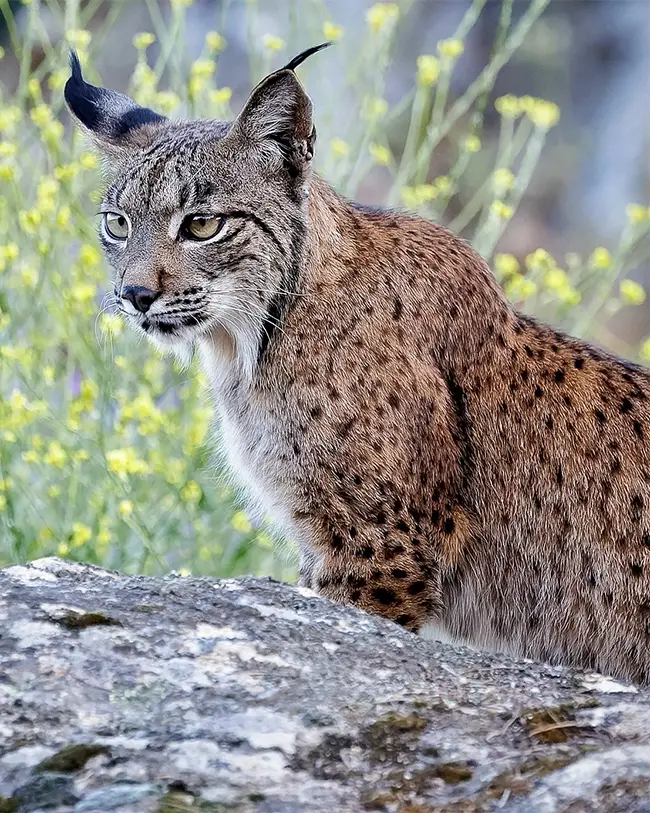
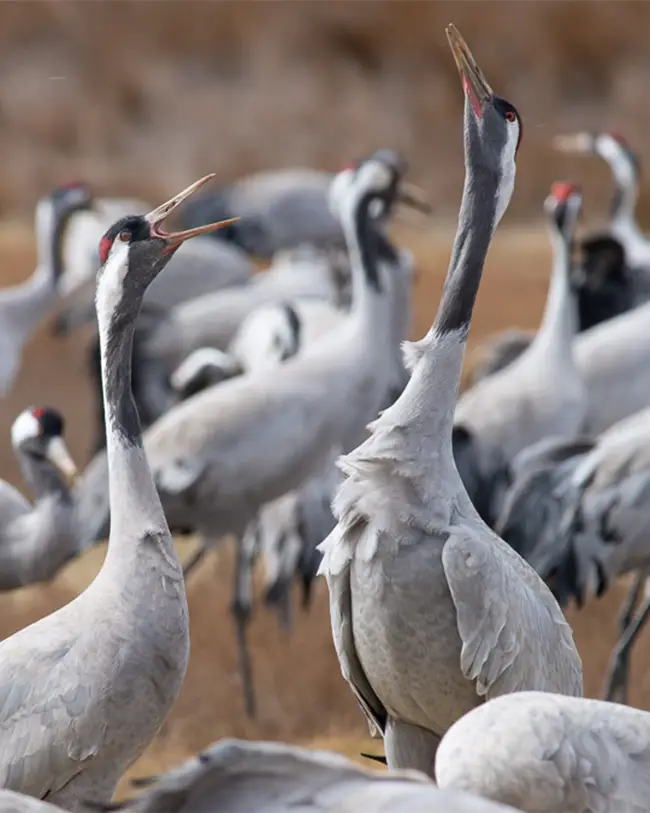
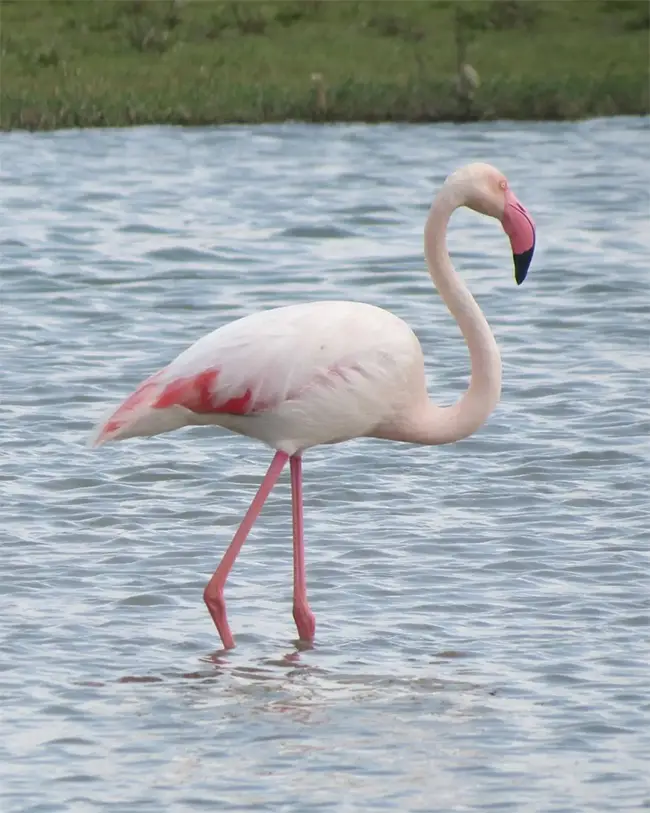
Flamenco fiesta
From mid-February to March, Jerez comes alive to celebrate the one of the region’s most famous exports, Flamenco! The Jerez Festival is a spectacular showcase of the music, dance, costuming and artistry of this passionate art form.
Enjoy performances by local and international artists, established flamenco legends and emerging talent. See authentic, traditional Flamenco, modern avant-garde interpretations, and everything in between.
Major events occur at the atmospheric Teatro Villamarta, but the Flamenco cannot be contained and spills out across the bars and venues of the city. In addition to performances, the festival features exhibitions, talks on the history and heritage of Flamenco, and workshops that invite participants to learn the art of flamenco dancing, singing, and guitar playing.
Are you a flamenco aficionado? Or just a little curious? Either way, book February accommodation in Jerez to be there during this fantastic festival.
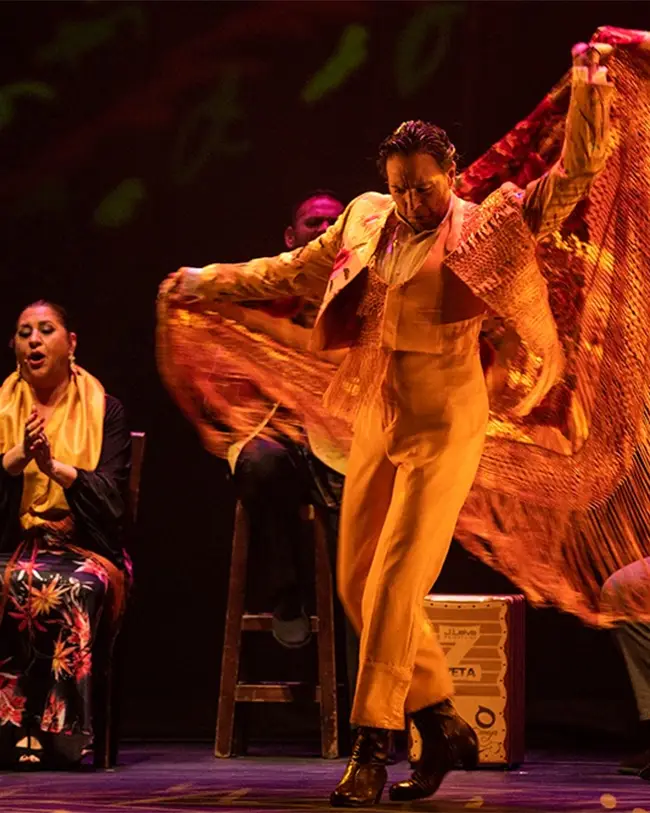

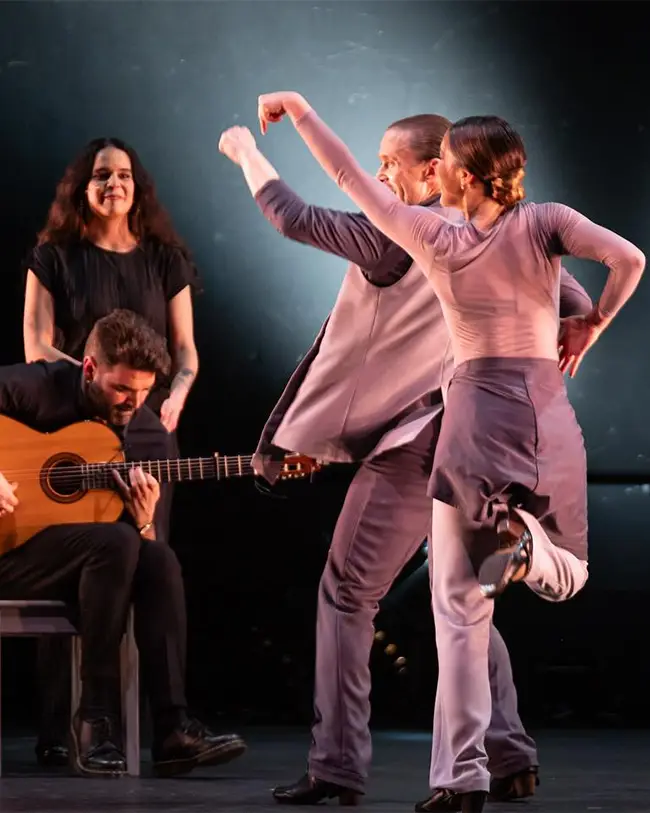
Starry starry nights
The long, dark nights of winter might not be everyone’s cup of tea, but they are good for some things. One of those is stargazing! February is the perfect time to view stunning star-strewn night skies, thanks to Spain’s many dark sky areas and observatories.
Here are some of the top spots to get away from the bright lights of the cities and enjoy some spectacular stargazing;
- The Cíes Islands off the coast of Galicia are geographically blessed with perfect stargazing conditions. Head out on a boat trip after dark to maximise the spectacular experience.
- The Canary Islands are one of the best stargazing locations in the Northern Hemisphere and Teide National Park in Tenerife takes the top spot thanks to its high altitude and lack of light pollution. Drive into the park after dark or join a guided stargazing tour.
- La Palma, one of the less visited Canary Islands, was named the world’s first Starlight Reserve and has been a Starlight tourist destination for over a decade. Visit the Roque de los Muchachos Visitors Centre to learn about the night sky and stay in accommodations catering specifically to stargazers.
- Andalucía is home to the largest Starlight tourist destination in the world, Sierra Morena, which covers over 400 kilometres.
- Extremadura, as one of the least populated regions of Spain, is ideal for stargazing. Visit Monfragüe National Park, known equally for its stunning landscapes and clear skies, or visit the Sierra de Gata region, where you can climb the Almenara watchtower for exceptional elevated views.
- Aragón has several starlight territories and dark sky areas and is home to Galáctica, a centre for astronomy full of exhibitions and attractions to delight the whole family.
Want to experience the night sky like you’ve never seen it before? Search for your dream accommodation in one of Spain’s best stargazing regions.
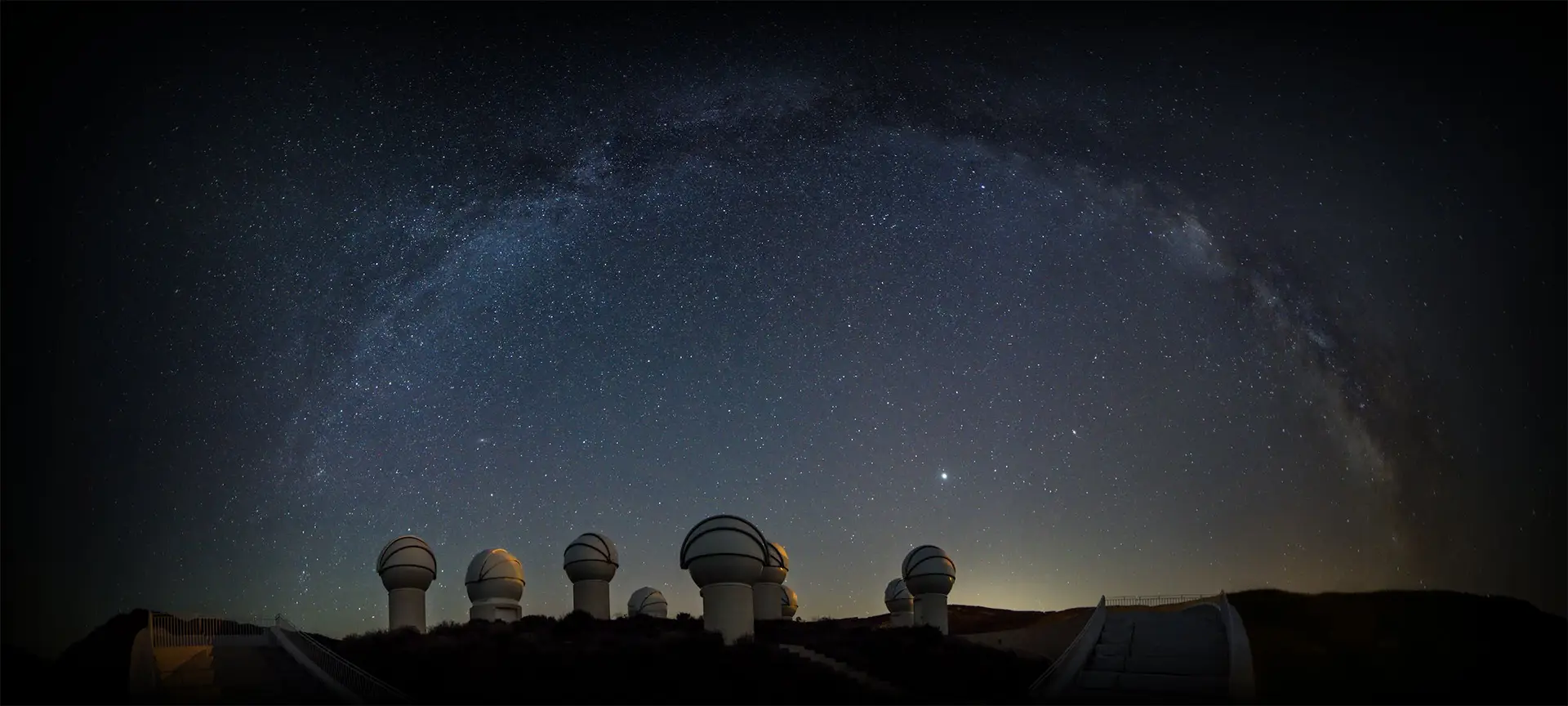
African adventure
If Spain’s winter temperatures are not warm enough for you, why not abandon the country altogether and head for the warmer shores of Morocco, at least for the day?
That might sound like madness, but it’s actually very doable since Morocco and Spain are only 14 kilometres apart at the closest point. You’ll be rewarded with high temperatures of 18°C, clear sunny skies and minimal chance of rain.
Several routes connect Spain to Morocco, but the most common and best option for a day trip is to head to Tarifa, the southernmost point of mainland Spain, and take a ferry to Tangier. There are several sailings a day, and the crossing takes less than an hour!
Tangier is a fascinating city and a wonderful place to spend a day. It’s known as the gateway to Africa, yet there are many hints at its historic relations with Spain. Spend a day wandering the labyrinthine old medina, shopping for eclectic souvenirs in the chaotic souks and marketplaces, enjoying sweet mint tea and delicious Moroccan food at the many excellent restaurants, before hopping back on the ferry to return to Spain for the night. Perfect!
You can do this independently, booking the ferry tickets yourself and spending the day wandering the city under your own steam, or book one of the many day trips and tours available to help you make the most of a day trip. Of course, if you have more time to play with, you can consider spending a night or two in Tangier and maybe even explore further afield.
Fancy adding a Moroccan adventure to your holiday? Find accommodation in Tarifa now to make the journey to Africa as swift as possible.
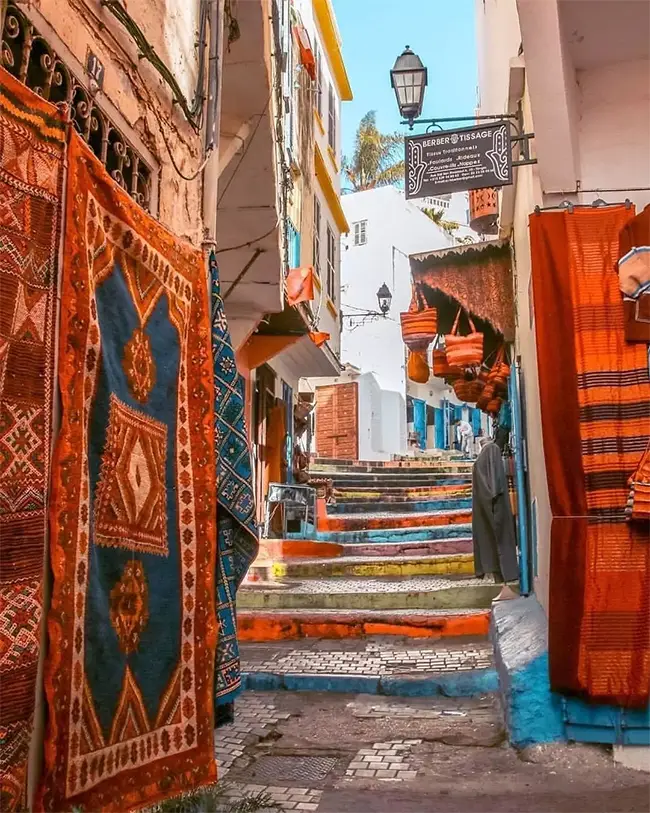
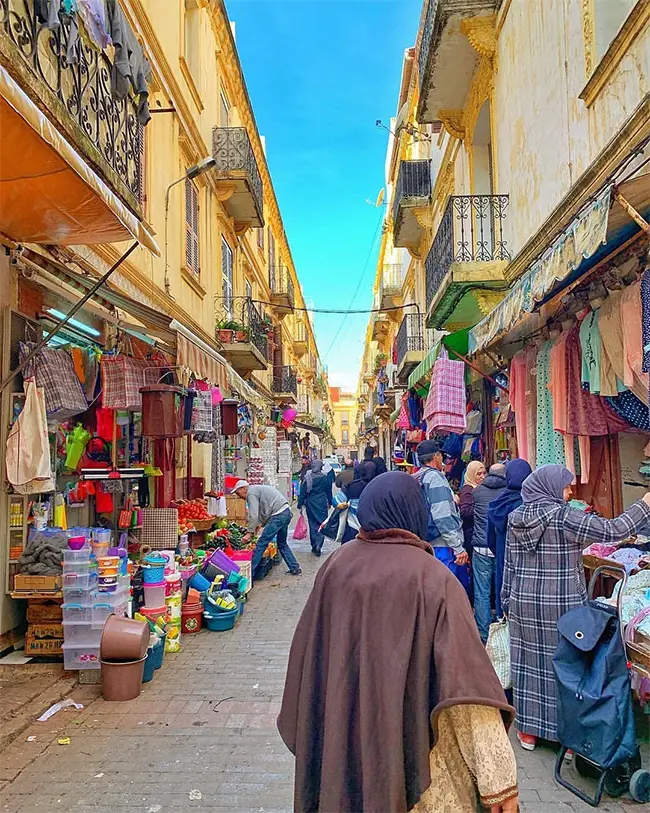
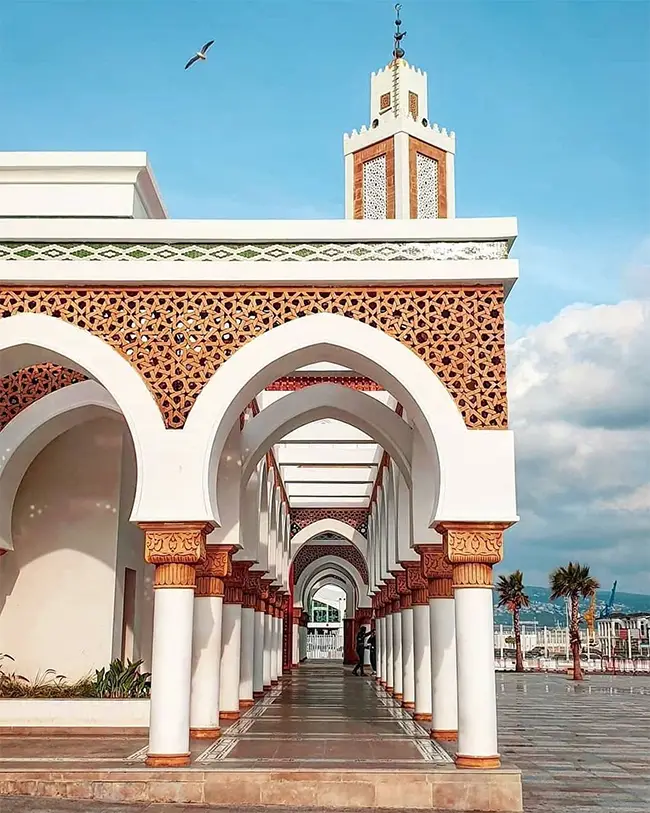
Top tips for travelling in Spain in February
Here are a few tips to help you get organised for your trip to Spain in February.
- The temperature in February can change a lot from early morning to afternoon to evening. So, pack layers that you can add or remove throughout the day. And if you’re heading to the chillier regions of the North, Madrid or the mountains, include a hat, scarf, and gloves too.
- There is a half term holiday in February when prices of flights and accommodations will rise. If you’re travelling with kids, be sure to book as far ahead as possible to get the best deals and avoid disappointment. If you’re travelling without kids consider booking outside of these dates.
- If you do decide to take a day trip to Morocco be sure to dress appropriately. It’s respectful to be covered from knees to shoulders, especially if you wish to explore mosques and churches.
- 28th February is the Day of Andalucía and a public holiday in the region. Many businesses will close for the day so plan ahead and don’t get caught out.
- No trip abroad is complete without making sure you’re covered for every eventuality. Any number of things can go wrong from flight cancellations to illness and injury or the loss of beloved belongings. Make sure you have quality travel insurance and check it carefully to be sure you’re covered for any adventure or winter sports you might try out, any gadgets you’re carrying, and any other countries you might nip over to for a day trip!
So what do you think of our top 10 things to do in Spain in February?
Can you imagine starting your new year with a trip to one of the country’s many ski resorts? Wandering through orchards of almond blossoms? Soaking up the winter sun, doing some flamingo spotting or sampling some Spanish cider? If so, search for your perfect accommodation now and start packing for a perfect winter holiday in Spain.
What about next month? Here’s our guide to the top 10 things to do in Spain in March.
I am a huge fan of Spain and knew I would be before I’d ever set foot there. Any country where meals last for hours and afternoon naps are part of the culture is always going to be right up my street! And it did not disappoint. From beach holidays in the Canaries to working in the Balearics to road-tripping through the mainland and city breaks in the country’s urban hubs, I have returned again and again to Spain and will continue to do so for years to come.
